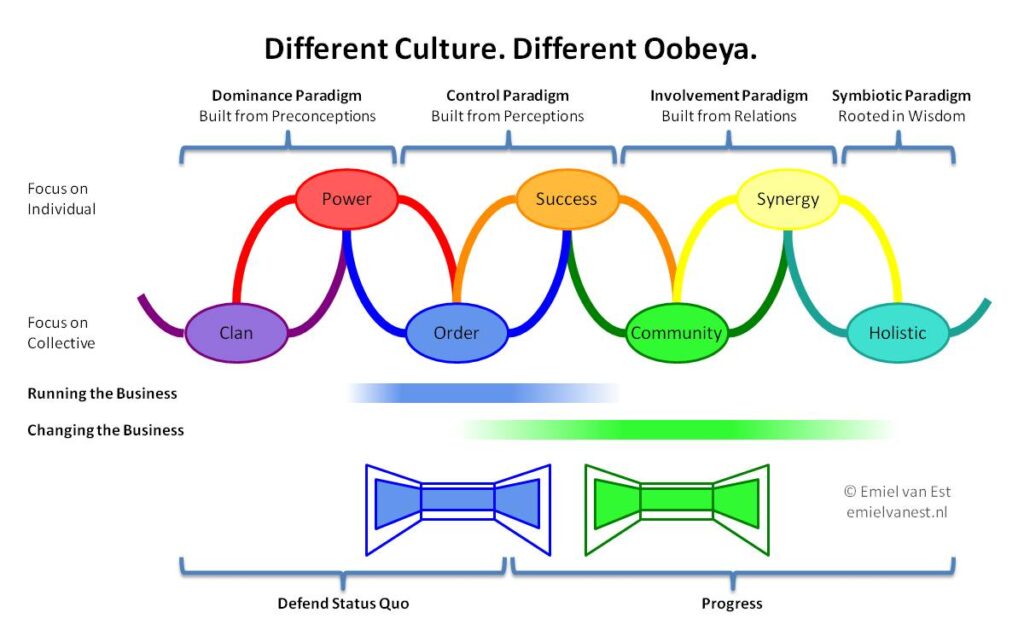Today I read a great article about the use of oobeya. In this article Tim Wiegel is interviewed about his oobeya coaching practice.
I see one pitfall in the acticle though. As Tim mentions, use of an obeya requires a change of mindset. This puts us right in the middle of culture change and culture development.
I think different cultures need different oobeyas. If you take the spiral dynamics framework as a reference I notices that Tim is talking from higher level development stages like a GREEN community culture or a YELLOW synergy culture.
The quote “If different teams want to work together towards a common goal, they need consensus about what that goal is.” is an indicator for that.
Consensus may be too much to ask for if you still have a RED power culture or a BLUE order culture. In these cultures the oobyea may take a different form and different routines may need to be practiced to develop a next stage culture.
Oobeya helps see the collective

An oobeya is a tool to help focus on the collective. It is a tool to help (multiple) teams to cooperate better. Therefore, in the image above, you see two “collective colored” oobeyas.
Running the business
A BLUE oobeya to run the business is the first one that comes to mind. I imagine such an oobeay to be helpful to create order in daily business.
This kind of oobeya is very related to the daily huddles and daily kata coaching cycles that are already quite common practices in organisations that strive towards a culture of continuous improvement. It builds foundational practices for the Control Paradigm and roots people thinking in Perceptions instead of Preconceptions.
Changing the business
A GREEN oobeya to change the business is the second one that comes to mind. I imagine such an oobeya to be helpful to align a bigger community to strive for common strategic goals.
This kind of oobeya is very related to strategy deployment or hoshin kanri that some organisations strive to include into their efforts towards a culture of continuous improvement. It builds foundational practices for the Involvement Paradigm and builds on peoples thinking in Perceptions to develop better Relations. Not just within a team but very much so across teams.